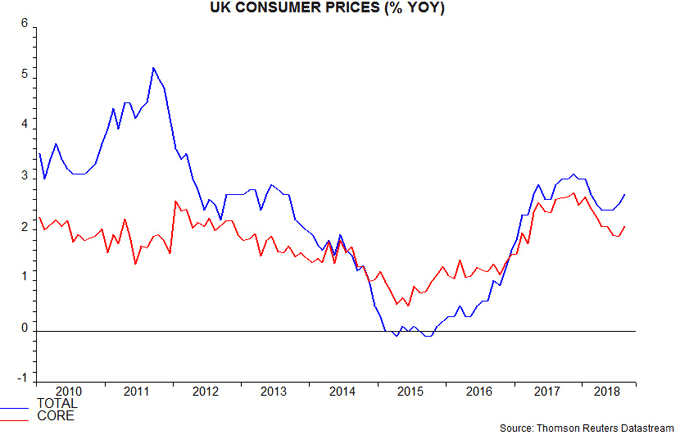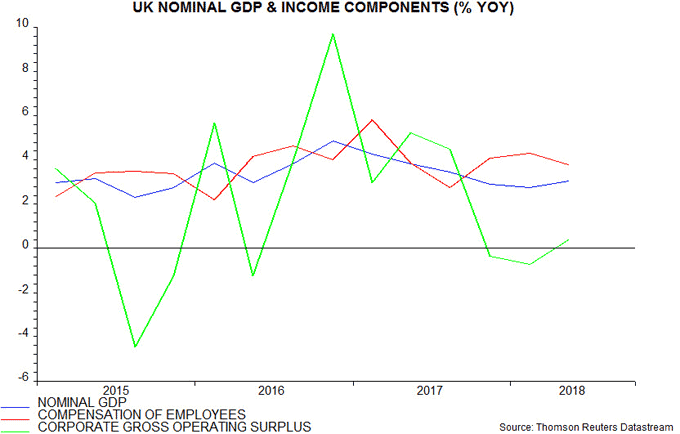UK inflation resilience consistent with past monetary strength
UK consumer price inflation rebounded to 2.7% in August, well above a consensus estimate of 2.4% and suggesting an overshoot of the 2.48% forecast for the third quarter in the August Inflation Report. Core as well as headline inflation pushed higher – see first chart*. Hikes in household energy bills may contribute to the headline rate remaining at around 2.5% in the fourth quarter, rather than falling to 2.29%, as predicted in the Report.

Does this news vindicate the MPC’s August rate hike and even suggest a need for further near-term policy tightening?
Not according to the analysis here. Inflation resilience is judged to be a reflection of monetary strength in 2016, taking into account the historical two-year-plus lead from monetary trends to core retail / consumer prices, documented in a post in May 2016. Annual growth rates of broad and narrow money – as measured by non-financial M4 / M1 – peaked in September 2016, falling to the lowest levels since 2011-12 in the second quarter of 2018. Inflation, therefore, should subside in 2019-20, barring significant sterling weakness or a commodity price shock.
MPC hawks are concerned about upward pressure on earnings and unit labour cost growth but profit margins rather than prices are likely to take the strain against a backdrop of restrictive monetary conditions and weak economic expansion. A margin squeeze, indeed, is already under way: annual growth of employee compensation has been above that of nominal GDP over the last three quarters, resulting in corporate gross operating profits stagnating – second chart.

Monetary trends need to strengthen to justify further policy tightening. As previously discussed, the numbers through July were showing signs of recovery but this may have been aborted by the August rate hike – the next data release is on 1 October. The August inflation jump, meanwhile, will act as a drag on real money growth and, by extension, economic prospects.
*Core = excluding energy, food, alcohol, tobacco and education, and adjusted for VAT changes.

Reader Comments